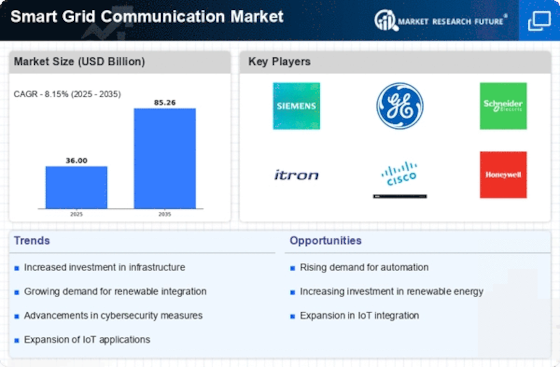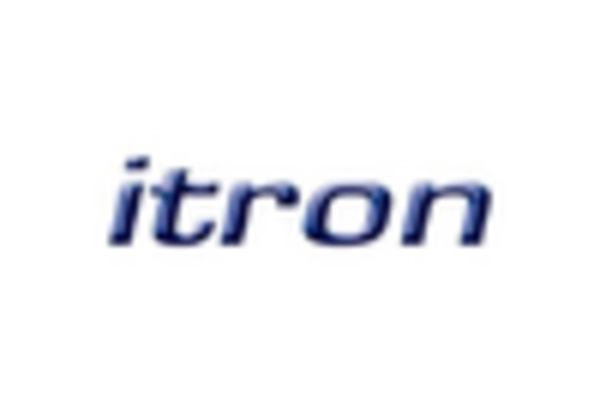Increased Cybersecurity Concerns
Increased cybersecurity concerns are emerging as a critical driver for the Smart Grid Communication Market. As smart grids become more interconnected and reliant on digital communication, the potential for cyber threats escalates. The U.S. Cybersecurity and Infrastructure Security Agency has highlighted the need for robust cybersecurity measures to protect critical infrastructure, including energy systems. This growing awareness is prompting utilities to invest in advanced communication technologies that incorporate enhanced security features. The market for cybersecurity solutions within the smart grid sector is expected to grow significantly, as utilities seek to safeguard their operations against potential cyberattacks. Consequently, the Smart Grid Communication Market is likely to expand as stakeholders prioritize the integration of secure communication systems.
Government Initiatives and Funding
Government initiatives and funding play a crucial role in propelling the Smart Grid Communication Market. Various governments are implementing policies and providing financial support to modernize aging grid infrastructures. For instance, the U.S. Department of Energy has allocated billions in funding for smart grid projects aimed at enhancing grid resilience and efficiency. Such initiatives not only promote the adoption of smart grid technologies but also stimulate private sector investments. The commitment to reducing carbon emissions and improving energy efficiency further underscores the importance of smart grid communication systems. As these government-backed efforts continue, the Smart Grid Communication Market is likely to witness accelerated growth, driven by increased investments and supportive regulatory frameworks.
Rising Demand for Energy Efficiency
The rising demand for energy efficiency is a significant driver for the Smart Grid Communication Market. As consumers and businesses seek to reduce energy costs and minimize their carbon footprints, the need for smart grid technologies that facilitate energy management becomes increasingly apparent. The U.S. Energy Information Administration projects that energy efficiency measures could reduce electricity consumption by up to 20 percent by 2030. Smart grid communication systems enable real-time monitoring and control of energy usage, allowing consumers to make informed decisions about their energy consumption. This trend is likely to drive the adoption of smart grid solutions, thereby fostering growth in the Smart Grid Communication Market as utilities and consumers alike prioritize energy efficiency.
Integration of Renewable Energy Sources
The increasing integration of renewable energy sources into the power grid is a pivotal driver for the Smart Grid Communication Market. As nations strive to meet sustainability goals, the demand for efficient communication systems that can manage the variability of renewable energy sources, such as solar and wind, is paramount. The International Energy Agency indicates that renewable energy could account for over 30 percent of the global electricity generation by 2030. This shift necessitates advanced communication technologies to facilitate real-time data exchange and grid management, thereby enhancing the reliability and efficiency of energy distribution. Consequently, the Smart Grid Communication Market is likely to experience substantial growth as utilities invest in infrastructure to support this transition.
Advancements in Communication Technologies
Rapid advancements in communication technologies are significantly influencing the Smart Grid Communication Market. Innovations such as 5G, low-power wide-area networks (LPWAN), and satellite communications are enhancing the capabilities of smart grids. These technologies enable faster data transmission, improved connectivity, and better integration of distributed energy resources. According to industry reports, the deployment of 5G technology is expected to enhance communication speeds by up to 100 times compared to previous generations. This technological evolution is likely to facilitate more efficient grid management and real-time monitoring, thereby driving the demand for smart grid communication solutions. As a result, the Smart Grid Communication Market is poised for robust expansion, driven by the need for enhanced communication infrastructure.

















Leave a Comment